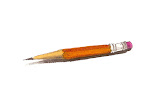
The 14th annual Multicultual Children's Book Festival, sponsored by the Kennedy Center in Washington, DC, is intent on celebrating diverse cultures. From the look of yesterday's enthusiastic throng of children, families, teachers, and children's book lovers, the festival was a huge success. Attendees met favorite and featured authors, participated in workshops, listened to readings, and saw illustration demonstrations. The cultures of African, African-American, Arab, Arab-American, Asian, Asian-American, Latin American, Latino, and Native American peoples were all represented. With my ties to all things French, I asked one of the organizers if next year, European countries, with their wide array of languages and cultures, might find a place at the table: Why not share with American children the literature of Denmark, France, Italy, Germany, Belgium, Spain, England, and more... wouldn't that make a fine addition to multiculturism?

I was lucky enough to hear Linda Sue Park read from her delightful picture book "Bee-bim Bop!," a poem about a dish every Korean child enjoys, consisting of rice, egg strips, vegetables, and meat. The joy expressed in her poem made me want to run out to my local market, buy the necessary ingredients, and whip myself up a batch of bee-bim bop. You can imagine how pleased I was when, later that evening, I discovered the recipe at the end of the book. She also presented "Yum! Yuk!," a fold-out book of people sounds expressing sentiments such as distaste, laughter, and surprise. As she pointed out, we say things one way in English, but in other parts of the world, the same human exclamations are voiced very differently. Her first presentation had the audience eating out of her hand while the second had them squealing with delight! I can't wait to share these two books with my new class of first graders at the lycée. When I finally got the chance to chat with her, she signed a copy of her work of a more serious nature for middle grade children, "The Single Shard," winner of the 2002 Newbery Prize. With its unforgettable characters, timeless theme, and vision of artistic endeavor, this quiet but forceful story is one of my favorites for young people.

If my encounter with Linda Sue Park was lighthearted and fun, meeting and speaking with Anne Sibley O'Brien, illustrator, writer, and peace activist was just as much a treat, but on a whole other level. Anne spent her childhood in Korea and has long been passionate about multiracial and multicultural subjects. I choose to purchase "The Legend of Hong Kil Dong, The Robin Hood of Korea," a picture book in graphic novel form, which I have now read and adored! Hopefully, my school will let me order 20 copies for my fourth graders. Stories such as this one are ageless and children need to read of other children whose courage is tried and tested.

Of all the beautiful books I saw on Saturday afternoon, the one that moved me the most was the book Anne has co-authored with her son, Perry Edmond O'Brien, "After Gandhi: One Hundred Years of Nonviolent Resistance," published by Charlesbridge. This work contains profiles of fifteen activists and movements for social justice in the spirit of Gandhi's nonviolent resistance. In a presentation at the end of the day, she read to us the passages concerning César Chávez and Aung San Suu Kyi. In the book, we also find Mohandas Gandhi (of course) as well as Rosa Parks, Thich Nhat Hanh, Charles Perkins, Muhammad Ali, Mairead Corrigan and Betty Willams, Wangari Maathai, Nelson Mandela, Václav Hav, all of whom were inspired by Gandhi, his words, and his deeds, and all of whom have worked through peaceful ways, to fight injustice and better the world (and some of whom, I am not proud to say, I had never heard). The Madres de Plaza de Mayo and the Student Activists of Tiananmen Square are also presented. Most importantly, she raises the question of nonviolence in shaping our future. My questions now are: how do I share these profiles with my students? Beginning at what age? In what context? How does one learn tolerance? How does one teach tolerance?





















Hola como esta amigos? yo se la tema es differente pero quise compartir con usted!excursiones en estambul
ReplyDelete